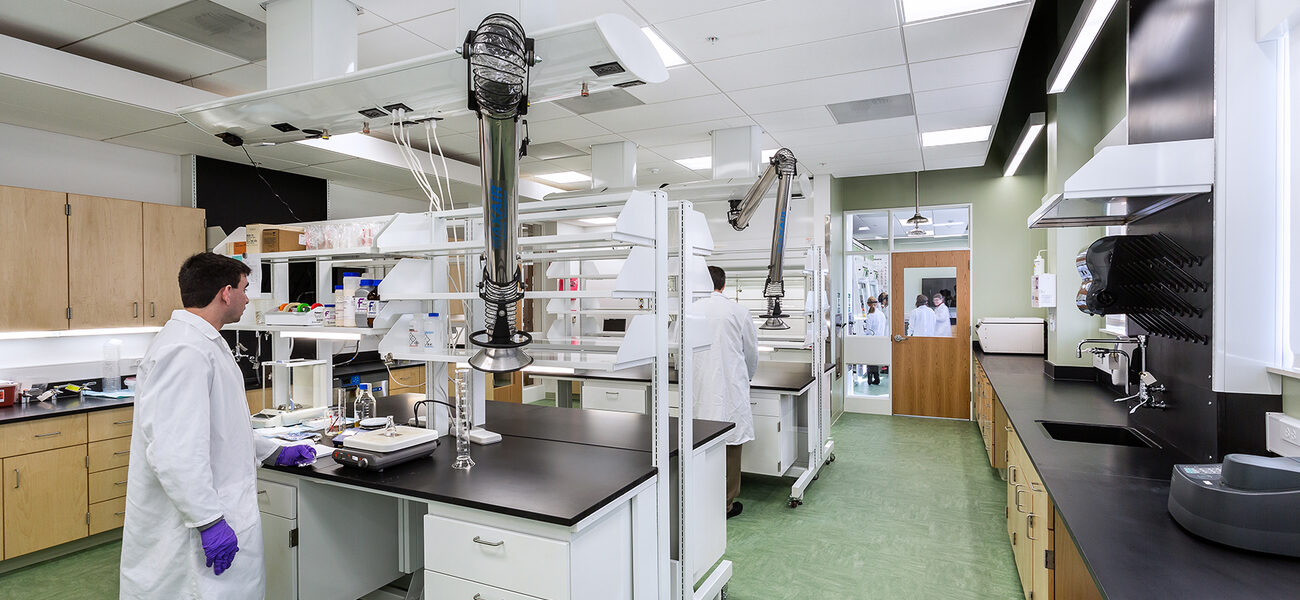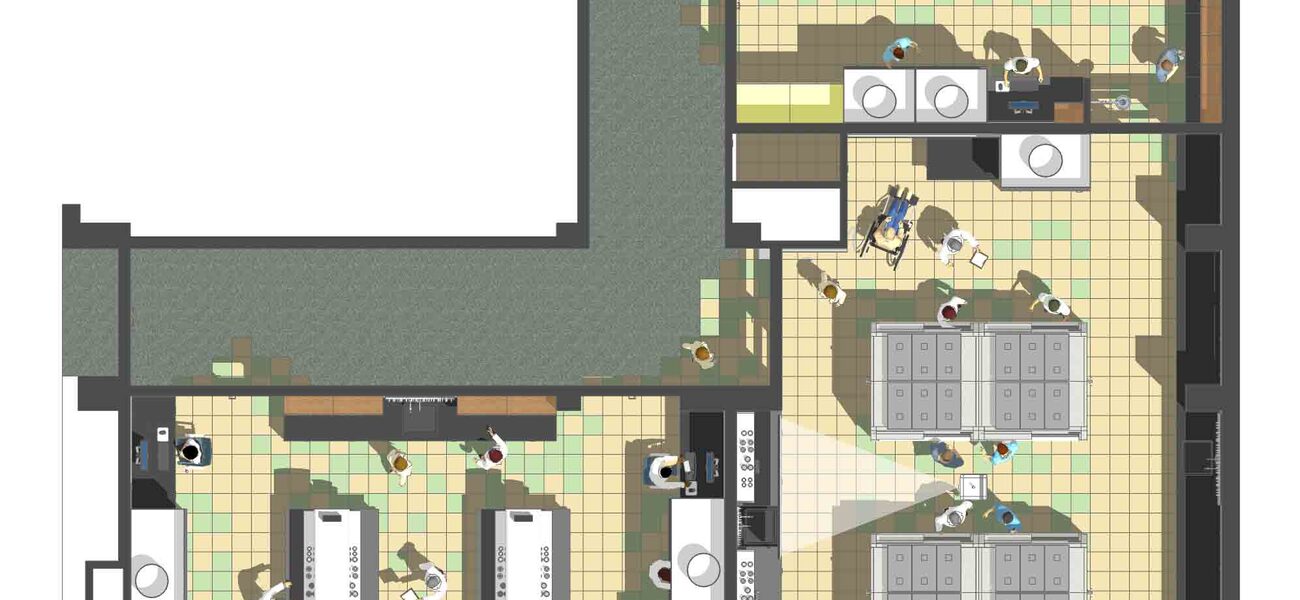The 2,200-sf gut renovation for organic chemistry labs at Marywood University’s Center for Natural and Health Sciences Building includes three spaces: a 16-student organic chemistry teaching lab with filtering chemical fume hoods (shown above), an eight-student organic chemistry research lab with conventional ducted hoods, and a dedicated laboratory preparation and support space, also equipped with ducted hoods.
The low floor-to-floor height on the top floor, where the labs are located, limited available mechanical capacity within the existing infrastructure, and fume-hood-intensive laboratories were at odds with the project budget. After an extensive chemical compatibility and life cycle analysis, the green filtering fume hood was approved for use.
Eight filtering chemical fume hoods were installed in the teaching labs, providing several advantages over conventional ducted fume hoods. In addition to reducing initial capital investment and engineered infrastructure efficiencies, the filtering fume hoods provide long-term flexibility of use, environmental benefits, and significant energy cost savings for Maywood University’s science department. Benefits include:
- Lower first capital cost. With a reduced need for laboratory exhaust, the building’s HVAC systems—including air handling units, exhaust fans, ductwork, and control systems—realized significant reductions in size and capacity.
- Reduced demands on existing HVAC infrastructure. The mechanical HVAC loads for the new program were reduced by 25-30 percent, resulting in lower demands on the existing building engineering systems.
- Lower floor-to-floor height. With reduced supply and exhaust ductwork to the teaching labs, the ductwork and controls for the remaining four ducted hoods were easily accommodated within the restricted floor-to-floor height of 12 feet.
- Adaptability and flexibility. Ductless and outfitted with quick-connect laboratory utility fittings, the filtering fume hoods are inherently flexible and capable of being easily repositioned throughout the laboratory without the need for time-consuming and expensive construction.
- Environmental benefits. Unlike conventional ducted fume hoods, which exhaust directly to the atmosphere, filtering fume hoods adsorb and contain the hazardous material within the Neutrodine® filter. The filtered air is then recirculated back to the lab, and at the end of its life, the filter is collected and disposed of in an environmentally sound manner.
- Energy cost savings. During the labs’ first 12 months of operation, a typical six-foot green fume hood tracked 12,312 kWh of energy saved. In the teaching lab, with eight fume hoods operating approximately 40 hours a week, that’s almost 100,000 kWh of energy saved, or approximately $12,000 per year in annual energy savings.
| Organization | Project Role |
|---|---|
|
Architect
|
|
|
Reuther+Bowen
|
Construction Manager
|
|
GPI/Greenman-Pedersen, Inc.
|
MEP Engineering
|
|
Thermo Fisher Scientific
|
Laboratory Casework
|
|
Thermo Fisher Scientific
|
Filtering Fume Hoods
|


